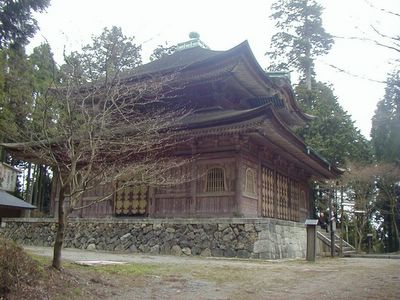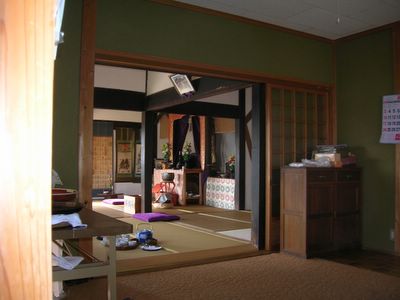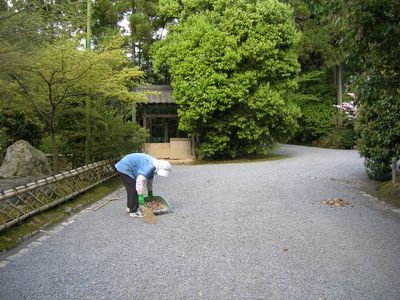June and Mark on Saturday and Ian and Rachel on Wednesday. They made their solemn vows and were married at Reading Buddhist Priory with Rev. Master Olwen, the prior, officiating. If somebody had told me that the priory could contain forty plus people at once, all in one room, I’d have been doubtful. These two weddings proved it possible, just!
I’d been invited to witness these two weddings and although I’d originally not planned to attend them my schedule in the UK is flexible enough to allow for change. To go seemed good to do. So last Saturday I caught the train from Exeter, where I’d been staying with Rev. Master Myfanwy at Dragon Bell Temple, to Reading near London. I was glad to be present and to personally wish these couples well in their lives together and to join in the celebrations with their family and friends, many of whom had not been to a anything Buddhist before.
Years ago I attended the annual religious conference at Atlantic College in Wales. The youngsters at that school, along with the religious teachers, were invited to ceremonies from different faith traditions with a view to nurturing tolerance and greater religious understanding. One evening we had a Shabbat Supper, a ceremonial meal within the Jewish tradition. The wife of the officiating rabbi gave some orientation to help us be at ease. She explained as follows, “When you attending a friends wedding you go and participate whole heartedly. However when you leave you do not end up married!” She continued, “So it is with our meal together. Please do join in wholeheartedly, and at the end of it be assured, you will not be a Jew”! This helped tremendously and I have used her words at occasions, such as weddings, to help non-Buddhist relax in the unfamiliar Buddhist setting and ceremonial.
As it happened, at one of the weddings this week, there were people of the Jewish faith. The bride had already mentioned that she was slightly concerned about how her Jewish father would respond to being at the priory. During the ceremony, out of the corner of my eye, I spotted a gentleman who at first seemed far away and who then gradually entered into the ceremony as it proceeded. It was touched to catch a fleeting sight of his soft face turned towards his daughter as she made her vows. I related this latter and was told that hearing of her fathers attention was ‘the best present she could receive from him’. I was glad to be able to pass on what I’d observed.
On route from Exeter to Reading, and now on my return journey to Cornwall in what is called the West Country, the train passes through Taunton in Somerset. It is a special place of remembrance since my father died on the platform just before meeting me off a train in January 2000. At that time, as my trained pulled out of the station, I was silent witness to a touching scene. I observed from across several tracks the paramedics arrive and attempt to revive a gentleman, unknown to me at the time. Considering the odds of being present at the time of my father’s death, given my tendency to travel, I am always so grateful for what happened in Taunton since I was able to be there for him. There, even though I didn’t realize it at the time! I was also conveniently placed to attend to all that follows the death, identifying the body followed by funeral arrangements. My father and mother are buried in the grounds of Throssel Hole Buddhist Abbey in Northumberland.
Each time I pass through Taunton on the train, as I have just done, I remember my father with great gratitude. I also remember with a smile, at the circumstances of his death, he would have smiled too!
So there we have it ‘Two Weddings and a Memorial’! For those who don’t watch movies the title of this posting is a sideways reference to ‘Four Weddings and a Funeral’.




